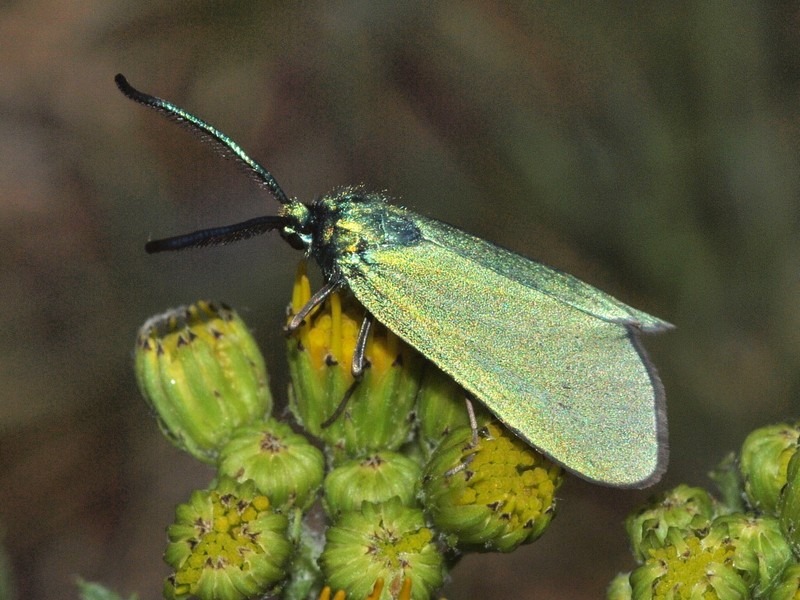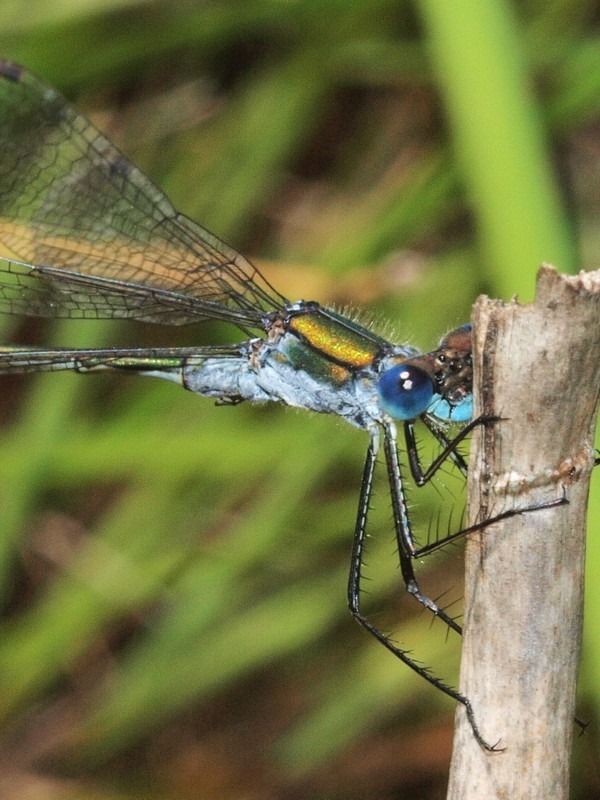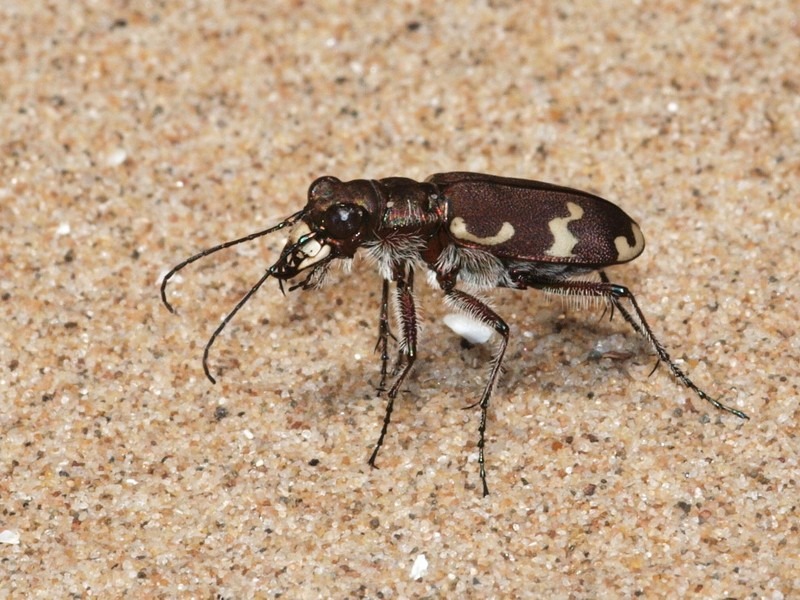Dr Phil Smith’s Wildlife Notes
July 2011
The first few days of July were enlivened by sightings of the Forester moth on the Sefton Coast. Closely related to the red-and-black burnets, this distinctive “Lincoln Green” insect is nationally declining and listed in the Lancashire Biodiversity Action Plan. Local moth enthusiasts have therefore been looking out for it, leading to Richard Walker reporting a colony on the National Trust’s Larkhill Heath. Coincidentally, my visit with friends on 2nd found Richard on site with three Forester’s temporarily potted up for study, the first I have ever seen. Later that day, Trevor Davenport and I bumped into another near the entrance of Ainsdale Sand Dunes National Nature Reserve. Then, on 3rd, I was helping with a vegetation survey on Freshfield Dune Heath when a visitor called me over: “What’s this green moth that’s just landed on my arm?” Needless to say it was another Forester; extraordinary! Finally, a few days later, Graham Jones counted 16 Foresters at three different places on Ainsdale NNR. Other notable moths recorded on the Sefton dunes this month included Goat Moth at Birkdale, Freshfield and Formby and Red-tipped Clearwing at Ainsdale.
Another of our important insects, the Grayling butterfly, had a good July with much larger numbers flying on the dunes than last year. Other groups, especially dragonflies, did less well, seeming to have been affected by the continuing dry conditions. Thus, I saw only one Emperor all month.

A tour of the scrapes in the southern part of Birkdale Sandhills on 25th confirmed the very low water-table, some sites being almost dry. Nevertheless, I was pleased to find eight Ruddy Darters, our only nationally notable dragonfly, while a deeper scrape in the Birkdale frontals produced another five Ruddy Darters and a good hatch of 33 Emerald Damselflies. I was amazed to see a Brown Hawker intercept a fast-flying Oak Eggar moth in mid-air, the two crashing headlong into the ground. I found them struggling in the vegetation but the dragonfly soon decided that this large powerful moth was more than it could cope with and departed. Apparently uninjured but disinclined to fly, the Oak Eggar was perched on a bush to recover. A downside of my visit was the discovery of two small patches of the New Zealand Pigmy-weed (Crassula helmsii) on the edge of one of the scrapes. This highly invasive escape from garden ponds and aquaria has so far been largely kept out of our coastal wetlands so it would be worthwhile trying to control it here.

On 27th, I found myself on the shore at Ravenmeols walking past the chestnut paling fencing that John Dempsey and colleagues erected a year ago. Spectacular amounts of sand have been trapped by the fences, creating a superb habitat for embryo dune and strandline plants, in particular Prickly Saltwort which I have not found in such abundance anywhere else on the Sefton Coast. This species is Red Data Book listed as “Vulnerable”. Also there was the regionally notable Frosted Orache, which I don’t see often. Finally, without trying too hard, I counted 32 of one of our most charismatic insects, the Northern Dune Tiger Beetle. They were dashing about on the hot sand and I managed to photograph one which was standing on tip-toes to keep cool!

As a member of the Altcar Conservation Advisory Group, I was invited to attend the ceremony for the 150th anniversary of the Rifle Ranges on 30th. As well as an impressive interpretative display, the Group had published a beautifully-illustrated guide book to the Altcar training estate just in time for the event. This covers the history, archaeology and wildlife interest of the 500 acre property and is a recommendable read.
